The list of religious populations article provides a comprehensive overview of the distribution and size of religious groups around the world. This article aims to present statistical information on the number of adherents to various religions, including major faiths such as Christianity, Islam, Hinduism, Buddhism, and others, as well as smaller religious communities. It also includes the percentage of nonreligious and atheistic populations.
The data is primarily sourced from organizations like the Pew Research Center, global surveys, census reports, and research studies, offering insights into the demographic composition of religious affiliations across different regions and countries. The list also explores trends in religious growth, decline, and shifts, reflecting the dynamic nature of religious adherence in the global context.
Current world estimates
Pew Research Center made its "Population Growth Projections, 2010–2050"[2] based on 2010 baseline estimates. Although 2020 is already in the past, new estimates for 2020 are still work in progress.[3] Their methodology is published as an appendix.[4]
| Religion | Adherents | Percentage |
|---|---|---|
| Christianity | 2.382 billion | 31.0% |
| Islam | 1.907 billion | 24.9% |
| Secular[lower-alpha 1]/Nonreligious[lower-alpha 2]/Agnostic/Atheist | 1.193 billion | 15.58% |
| Hinduism | 1.161 billion | 15.2% |
| Buddhism | 506 million | 6.6% |
| Chinese traditional religion[lower-alpha 3] | 394 million | 5.6% |
| Ethnic religions excluding some in separate categories | 300 million | 3% |
| African traditional religions | 100 million[7] | 1.2% |
| Sikhism | 26 million | 0.30% |
| Spiritism | 15 million | 0.19% |
| Judaism | 14.7 million[8] | 0.2% |
| Baháʼí | 5.0 million[9] | 0.07% |
| Jainism | 4.2 million | 0.05% |
| Shinto | 4.0 million | 0.05% |
| Cao Dai | 4.0 million | 0.05% |
| Zoroastrianism | 2.6 million | 0.03% |
| Tenrikyo | 2.0 million | 0.02% |
| Animism | 1.9 million | 0.02% |
| Neo-Paganism | 1.0 million | 0.01% |
| Unitarian Universalism | 0.8 million | 0.01% |
| Rastafari | 0.6 million | 0.007% |
| Total | 7.79 billion | 100% |
Notes
- ↑ These figures may incorporate populations of secular/nominal adherents as well as syncretist worshipers, although the concept of syncretism is disputed by some.
- ↑ Nonreligious includes agnostic, atheist, secular humanist, and people answering 'none' or no religious preference. Half of this group is theistic but nonreligious.[5] According to a 2012 study by Gallup International "59% of the world said that they think of themselves as religious person, 23% think of themselves as not religious whereas 13% think of themselves as convinced atheists".[6]
- ↑ Chinese traditional religion is described as "the common religion of the majority Chinese culture: a combination of Confucianism, Buddhism, and Taoism, as well as the traditional non-scriptural/local practices and beliefs."
Largest religion by country

By proportion
Christians
Countries and territories with the greatest proportion of Christians from Christianity by country, as of 2010:

.svg.png.webp) Vatican City 100% (100% Roman Catholic)
Vatican City 100% (100% Roman Catholic) Pitcairn Islands 100% (100% Seventh-day Adventist)[11]
Pitcairn Islands 100% (100% Seventh-day Adventist)[11] Samoa ~99% (mostly Protestant)[12]
Samoa ~99% (mostly Protestant)[12] East Timor 99.6%[13] (mostly Roman Catholic)
East Timor 99.6%[13] (mostly Roman Catholic) Armenia 98.5% (96% Oriental Orthodox)
Armenia 98.5% (96% Oriental Orthodox) American Samoa 98.3% (mostly Protestant; ARDA claim)[14]
American Samoa 98.3% (mostly Protestant; ARDA claim)[14] Malta 98.1%[15] (mostly Roman Catholic)
Malta 98.1%[15] (mostly Roman Catholic) Venezuela 98%[16] (71% Roman Catholic)
Venezuela 98%[16] (71% Roman Catholic) Greece 98%[17] (95% Eastern Orthodox)
Greece 98%[17] (95% Eastern Orthodox) Marshall Islands 97.2% (mostly Protestant)[18]
Marshall Islands 97.2% (mostly Protestant)[18] Tonga 97.2% (mostly Protestant)[19]
Tonga 97.2% (mostly Protestant)[19] San Marino 97%[20] (~97% Roman Catholic)
San Marino 97%[20] (~97% Roman Catholic) Paraguay 96.9%[21] (mostly Roman Catholic)
Paraguay 96.9%[21] (mostly Roman Catholic) El Salvador 96.4% (mostly Roman Catholic; ARDA claim)[22]
El Salvador 96.4% (mostly Roman Catholic; ARDA claim)[22] Kiribati 96% (mostly Protestant)[23]
Kiribati 96% (mostly Protestant)[23] Federated States of Micronesia ~96% (mostly Protestant)[24]
Federated States of Micronesia ~96% (mostly Protestant)[24] Barbados 95.1% (mostly Protestant)[25]
Barbados 95.1% (mostly Protestant)[25] Papua New Guinea 94.8% (mostly Protestant; ARDA claim)[26]
Papua New Guinea 94.8% (mostly Protestant; ARDA claim)[26] Mexico 94.6% (mostly Roman Catholic)
Mexico 94.6% (mostly Roman Catholic) Peru 94.51%[27] (mostly Roman Catholic)
Peru 94.51%[27] (mostly Roman Catholic) Romania 93% (mostly Eastern Orthodox)[28]
Romania 93% (mostly Eastern Orthodox)[28] Poland 92.9% (mostly Roman Catholic)[29]
Poland 92.9% (mostly Roman Catholic)[29] Croatia 91.1% (mostly Roman Catholic)[30]
Croatia 91.1% (mostly Roman Catholic)[30] Philippines 90% (mostly Roman Catholic)
Philippines 90% (mostly Roman Catholic)
Muslims
Countries and territories with a considerable proportion of Muslims from Islam by country as of 2010, excluding foreign workers in brackets:
Data is based on the Pew Forum on Religion and Public Life[31]

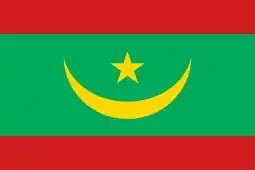 Mauritania 100%[32]
Mauritania 100%[32] Maldives 100%[33]
Maldives 100%[33] Gaza Strip 99.9%[34]
Gaza Strip 99.9%[34] Morocco 99.9%[35]
Morocco 99.9%[35] Yemen 99.8% (65% Sunni 33.5% Zaydi 1.5% Ismaili)[31]
Yemen 99.8% (65% Sunni 33.5% Zaydi 1.5% Ismaili)[31] Somalia 99.7%[36]
Somalia 99.7%[36] Afghanistan 99.7%[37] (90% Sunni 10% Shi'a)[31]
Afghanistan 99.7%[37] (90% Sunni 10% Shi'a)[31] Iran 99.6% (95% Shi'a, 5% Sunni)[38]
Iran 99.6% (95% Shi'a, 5% Sunni)[38] Tunisia 99.5%
Tunisia 99.5% Azerbaijan 99.2% (Shi'a)[31]
Azerbaijan 99.2% (Shi'a)[31] Iraq 99% (67% Shi'a, 33% Sunni)[31]
Iraq 99% (67% Shi'a, 33% Sunni)[31] Niger 99% (mostly Sunni)[31]
Niger 99% (mostly Sunni)[31] Turkey 98.6% (85% Sunni, 15% Shi’a)[39]
Turkey 98.6% (85% Sunni, 15% Shi’a)[39] Comoros 98.3%[40]
Comoros 98.3%[40] Algeria 98%
Algeria 98% Saudi Arabia 97.2% (90% Sunni, 10% Shi'a)[31]
Saudi Arabia 97.2% (90% Sunni, 10% Shi'a)[31] Sudan 97%[41]
Sudan 97%[41] Djibouti 96.9%[31]
Djibouti 96.9%[31] Libya 96.6%[42]
Libya 96.6%[42] Pakistan 96.4% (85% Sunni 12% Shi'a 3% Other)[43]
Pakistan 96.4% (85% Sunni 12% Shi'a 3% Other)[43] Bangladesh 90.4%[44]
Bangladesh 90.4%[44] Egypt 89.3%[45]
Egypt 89.3%[45] Indonesia 86.7%[46]
Indonesia 86.7%[46] Malaysia 61.3%
Malaysia 61.3% Nigeria 53.5%
Nigeria 53.5% Ethiopia 41%
Ethiopia 41%
Irreligious and atheists
Countries with the greatest proportion of people without religion, including agnostics and atheists, from Irreligion by country (as of 2020):[47]
 Czech Republic (78.4%)[47]
Czech Republic (78.4%)[47] North Korea (71.3%)[47]
North Korea (71.3%)[47] Estonia (60.2%)[47]
Estonia (60.2%)[47] Hong Kong (54.7%)[47]
Hong Kong (54.7%)[47] China (51.8%)[47]
China (51.8%)[47] South Korea (46.6%)[47]
South Korea (46.6%)[47] Latvia (45.3%)[47]
Latvia (45.3%)[47] Netherlands (44.3%)[47]
Netherlands (44.3%)[47] Uruguay (41.5%)[47]
Uruguay (41.5%)[47] New Zealand (39.6%)[47]
New Zealand (39.6%)[47] Mongolia (36.5%)[47]
Mongolia (36.5%)[47] Spain (35.5%)[49]
Spain (35.5%)[49] France (31.9%)[47]
France (31.9%)[47] United Kingdom (31.2%)[47]
United Kingdom (31.2%)[47].svg.png.webp) Belgium (31%)[47]
Belgium (31%)[47] Vietnam (29.9%)[47]
Vietnam (29.9%)[47] Sweden (29%)[47]
Sweden (29%)[47].svg.png.webp) Australia (28.6%)[47]
Australia (28.6%)[47] Belarus (28.6%)[47]
Belarus (28.6%)[47] United States (28%)[50]
United States (28%)[50] Luxembourg (26.7%)[47]
Luxembourg (26.7%)[47] Germany (26.3%)[47]
Germany (26.3%)[47].svg.png.webp) Canada (23.9%)[51]
Canada (23.9%)[51] Cuba (23.2%)[47]
Cuba (23.2%)[47].svg.png.webp) Switzerland (22.8%)[47]
Switzerland (22.8%)[47] Finland (20.8%)[47]
Finland (20.8%)[47] Hungary (20%)[47]
Hungary (20%)[47] Slovenia (18.8%)[47]
Slovenia (18.8%)[47]
Data is ranked by mean estimate in parentheses. Irreligious includes agnostic, atheist, secular people, and those having no formal religious adherence. It does not necessarily mean that those of this group don't belong to any religion. Some religions have harmonized with local cultures and can be seen as a cultural background rather than a formal religion. Additionally, the practice of officially associating a family or household with a religion, while not formally practicing the affiliated religion, is common in many countries. Thus, over half of this group is theistic and/or influenced by religious principles, but nonreligious/non-practicing and not true atheists or agnostics.[5] See Spiritual but not religious.
Hindus
Countries with the greatest proportion of Hindus from Hinduism by country as of 2010:
 Nepal 81.3%[52]
Nepal 81.3%[52] India 79.8%[53]
India 79.8%[53] Mauritius 48.54%[54]
Mauritius 48.54%[54] Fiji 27.9%[55]
Fiji 27.9%[55] Bhutan 25%[56]
Bhutan 25%[56] Guyana 24.8%[57]
Guyana 24.8%[57] Suriname 22.3%[58]
Suriname 22.3%[58] Trinidad and Tobago 18.2%[59]
Trinidad and Tobago 18.2%[59] United Arab Emirates 15%[60]
United Arab Emirates 15%[60] Sri Lanka 12.6%[61]
Sri Lanka 12.6%[61] Kuwait 12%[62]
Kuwait 12%[62] Bangladesh 9.6%[63]
Bangladesh 9.6%[63] Bahrain 8.1%[64]
Bahrain 8.1%[64] Réunion 6.7%[65]
Réunion 6.7%[65] Malaysia 6.3%[66]
Malaysia 6.3%[66] Singapore 5.1%
Singapore 5.1% Oman 3%
Oman 3% Seychelles 2.1%[67]
Seychelles 2.1%[67] New Zealand 2.0%[68]
New Zealand 2.0%[68] Pakistan 2.2%[69]
Pakistan 2.2%[69] Indonesia 1.7%[70]
Indonesia 1.7%[70] United Kingdom 1.7%[71]
United Kingdom 1.7%[71].svg.png.webp) Canada 1.5%[72]
Canada 1.5%[72] United States 0.7%[73]
United States 0.7%[73]
Buddhists
Countries with the greatest proportion of Buddhists from Buddhism by country as of 2010:[74]
Taoists/Confucians/Chinese traditional religionists
As a spiritual practice, Taoism has made fewer inroads in the West than Buddhism and Hinduism. Despite the popularity of its great classics the I Ching and the Tao Te Ching, the practice of Taoism has not been promulgated in America with much success;[78] these religions are not ubiquitous worldwide in the way that adherents of bigger world religions are, and they remain primarily an ethnic religion. Nonetheless, Taoist ideas and symbols such as taijitu have become popular throughout the world through tai chi, qigong, and various martial arts.[79]
 Taiwan 33–80%[80]
Taiwan 33–80%[80] China 30%[81]
China 30%[81] Hong Kong 28%[82]
Hong Kong 28%[82] Macau 13.9%[83]
Macau 13.9%[83] Singapore 8.5%[84]
Singapore 8.5%[84] Malaysia 2.6%[85]
Malaysia 2.6%[85] South Korea 0.2–1%[86]
South Korea 0.2–1%[86] Vietnam
Vietnam Philippines 0.01–0.05%
Philippines 0.01–0.05% Indonesia 0.05%
Indonesia 0.05%
The Chinese traditional religion has 184,000 believers in Latin America, 250,000 believers in Europe, and 839,000 believers in North America as of 1999.[87][88]
Ethnic and indigenous religionists
Indigenous statistics come from the U.S. Department of State International Religious Freedom Report (2009),[89] based on the highest estimate of people identified as indigenous or followers of indigenous religions that have been well-defined. Due to the syncretic nature of these religions, the numbers may not reflect the actual number of practitioners.
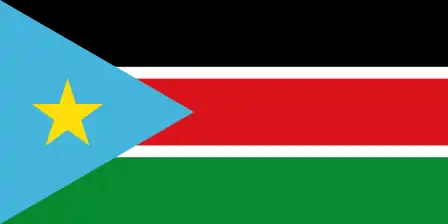 South Sudan 32.9%[90]
South Sudan 32.9%[90] Guinea-Bissau 30.9%[91]
Guinea-Bissau 30.9%[91] North Korea 29.5%[92]
North Korea 29.5%[92] Togo 35.6%[93]
Togo 35.6%[93] Côte d'Ivoire 25%
Côte d'Ivoire 25% Sudan 25%[94]
Sudan 25%[94] Benin 17.9%[95]
Benin 17.9%[95] Burundi 20%
Burundi 20% Burkina Faso 15%
Burkina Faso 15% South Africa 15%[96]
South Africa 15%[96] Democratic Republic of the Congo 12%
Democratic Republic of the Congo 12% Central African Republic 10%
Central African Republic 10% Gabon 10%
Gabon 10% Lesotho 10%
Lesotho 10% Nigeria 10%
Nigeria 10% Sierra Leone 10%[97]
Sierra Leone 10%[97] Kenya 9%
Kenya 9% Palau 9%[98]
Palau 9%[98] Ghana 8.5%
Ghana 8.5% Guinea 5%
Guinea 5%
Sikhs
Countries with the greatest proportion of Sikhs:

.svg.png.webp) Canada 2.12%[99][100]
Canada 2.12%[99][100] India 1.72%[105]
India 1.72%[105] Cyprus 1.1%[106]
Cyprus 1.1%[106] United Kingdom 0.88%[107]
United Kingdom 0.88%[107] New Zealand 0.88%[108]
New Zealand 0.88%[108].svg.png.webp) Australia 0.83%[109][110]
Australia 0.83%[109][110] Oman 0.75%[111]
Oman 0.75%[111] UAE 0.56%[112]
UAE 0.56%[112] Italy 0.37%[126]
Italy 0.37%[126] Singapore 0.35% [127]
Singapore 0.35% [127]
The Sikh homeland is the Punjab state, in India, where Sikhs make up approximately 58% of the population. This is the only place where Sikhs are in the majority. Sikhs have emigrated to countries all over the world – especially to English-speaking and East Asian nations. In doing so they have retained, to an unusually high degree, their distinctive cultural and religious identity. Sikhs are not ubiquitous worldwide in the way that adherents of larger world religions are, and they remain primarily an ethnic religion. But they can be found in many international cities and have become an especially strong religious presence in the United Kingdom and Canada.[128] Sikhism is also the fastest growing religion in New Zealand and Australia.[129][130]
Spiritists
 Cuba 10.3%
Cuba 10.3% Jamaica 10.2%
Jamaica 10.2% Brazil 4.8%
Brazil 4.8% Suriname 3.6%
Suriname 3.6% Haiti 2.7%
Haiti 2.7% Dominican Republic 2.2%
Dominican Republic 2.2% The Bahamas 1.9%
The Bahamas 1.9% Nicaragua 1.5%
Nicaragua 1.5% Trinidad and Tobago 1.4%
Trinidad and Tobago 1.4% Guyana 1.3%
Guyana 1.3% Venezuela 1.1%
Venezuela 1.1% Colombia 1.0%
Colombia 1.0% Belize 1.0%
Belize 1.0% Honduras 0.9%
Honduras 0.9% Puerto Rico 0.7%
Puerto Rico 0.7% Panama 0.5%
Panama 0.5% Iceland 0.5%
Iceland 0.5% Guadeloupe 0.4%
Guadeloupe 0.4% Argentina 0.2%
Argentina 0.2% Guatemala 0.2%
Guatemala 0.2%
Spiritist estimates come from a single source, which gives a relative indication of the size of the Spiritist communities within each country.
Jews
Countries with the greatest proportion of Jews (as of 2017):
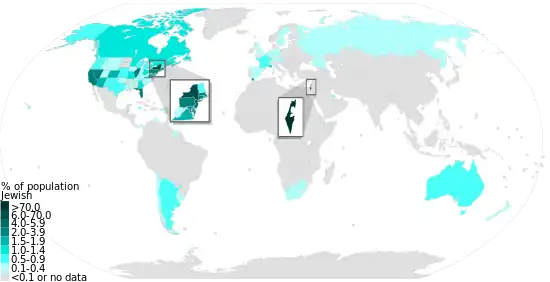
 Israel 73.6%[8]
Israel 73.6%[8] Gibraltar 2.0%[8]
Gibraltar 2.0%[8] United States 1.76%[8]
United States 1.76%[8].svg.png.webp) Canada 1.07%[8]
Canada 1.07%[8] France 0.7%[8]
France 0.7%[8] Hungary 0.485%[8]
Hungary 0.485%[8] Uruguay 0.483%[8]
Uruguay 0.483%[8].svg.png.webp) Australia 0.47%[8]
Australia 0.47%[8] United Kingdom 0.44%[8]
United Kingdom 0.44%[8] Argentina 0.41%[8]
Argentina 0.41%[8] U.S. Virgin Islands 0.36%[8]
U.S. Virgin Islands 0.36%[8].svg.png.webp) Belgium 0.259%[8]
Belgium 0.259%[8] Panama 0.250%[8]
Panama 0.250%[8] Latvia 0.24%[8]
Latvia 0.24%[8].svg.png.webp) Switzerland 0.22%[8]
Switzerland 0.22%[8] Netherlands 0.17%[8]
Netherlands 0.17%[8] New Zealand 0.16%[8]
New Zealand 0.16%[8] Estonia 0.154%[8]
Estonia 0.154%[8] Bermuda 0.154%[8]
Bermuda 0.154%[8] Sweden 0.152%[8]
Sweden 0.152%[8] Germany 0.14%[8]
Germany 0.14%[8] South Africa 0.124%[8]
South Africa 0.124%[8] Ukraine 0.124%[8]
Ukraine 0.124%[8] Russia 0.122%[8]
Russia 0.122%[8] Denmark 0.112%[8]
Denmark 0.112%[8]
Jains
By population
Christians
Largest Christian populations (as of 2011):
 United States 229,157,250[132] (details)
United States 229,157,250[132] (details) Brazil 169,213,130[133]
Brazil 169,213,130[133] Russia 114,198,444[134]
Russia 114,198,444[134] Mexico 106,204,560[135]
Mexico 106,204,560[135] Nigeria 80,510,000[136]
Nigeria 80,510,000[136] Philippines 78,790,000[137]
Philippines 78,790,000[137] China 67,070,000[136]
China 67,070,000[136] Democratic Republic of the Congo 63,150,000[136]
Democratic Republic of the Congo 63,150,000[136] Italy 55,832,000
Italy 55,832,000 Ethiopia 51,477,950
Ethiopia 51,477,950 Germany 50,752,580[138]
Germany 50,752,580[138] Colombia 44,502,000
Colombia 44,502,000 Ukraine 41,973,000
Ukraine 41,973,000 South Africa 40,243,000
South Africa 40,243,000 France 39,560,000[136]
France 39,560,000[136] Spain 38,568,000
Spain 38,568,000 Poland 36,526,000
Poland 36,526,000 Kenya 33,625,790
Kenya 33,625,790 Argentina 33,497,100
Argentina 33,497,100 United Kingdom 33,200,417
United Kingdom 33,200,417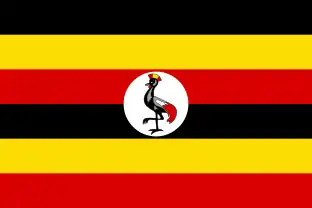 Uganda 29,943,000
Uganda 29,943,000 Indonesia 28.571.606[139]
Indonesia 28.571.606[139] India 28,436,000
India 28,436,000 Venezuela 28,340,790
Venezuela 28,340,790 Peru 27,365,100
Peru 27,365,100
Muslims
Largest Muslim populations (as of 2017):
 Indonesia 229,000,000[140] (details)
Indonesia 229,000,000[140] (details) Pakistan 215,000,000[141]
Pakistan 215,000,000[141] India 209,000,000[142]
India 209,000,000[142] Bangladesh 153,000,000[143]
Bangladesh 153,000,000[143] Nigeria 117,000,000[144]
Nigeria 117,000,000[144] Egypt 87,500,000[145]
Egypt 87,500,000[145] Iran 82,000,000[146]
Iran 82,000,000[146] Turkey 79,850,000[140]
Turkey 79,850,000[140] Ethiopia 48,000,000[147]
Ethiopia 48,000,000[147] Sudan 44,000,000[148]
Sudan 44,000,000[148] Iraq 41,000,000[149]
Iraq 41,000,000[149] Algeria 39,000,000[150]
Algeria 39,000,000[150] Morocco 38,000,000[35]
Morocco 38,000,000[35] Afghanistan 37,000,000[151]
Afghanistan 37,000,000[151] Saudi Arabia 33,000,000[152]
Saudi Arabia 33,000,000[152] Uzbekistan 33,648,090[153]
Uzbekistan 33,648,090[153] Yemen 30,000,000[154]
Yemen 30,000,000[154] China 28,000,000[155]
China 28,000,000[155] Russia 25,000,000[156]
Russia 25,000,000[156] Tanzania 22,000,000[157]
Tanzania 22,000,000[157] Niger 22,000,000[158]
Niger 22,000,000[158]
Hindus
Largest Hindu populations (as of 2020):[159]
 India 1,120,000,000
India 1,120,000,000 Nepal 28,600,000
Nepal 28,600,000 Bangladesh 14,274,430
Bangladesh 14,274,430 Indonesia 4,640,000
Indonesia 4,640,000 Pakistan 4,400,000
Pakistan 4,400,000 Sri Lanka 3,090,000
Sri Lanka 3,090,000 United States 2,510,000
United States 2,510,000 Malaysia 1,940,000
Malaysia 1,940,000 United Arab Emirates 1,239,610
United Arab Emirates 1,239,610 United Kingdom 1,030,000
United Kingdom 1,030,000 South Africa 749,870
South Africa 749,870 Mauritius 665,820
Mauritius 665,820 Myanmar 890,000[160]
Myanmar 890,000[160].svg.png.webp) Canada 610,000
Canada 610,000 South Africa 540,000
South Africa 540,000 Saudi Arabia 440,000
Saudi Arabia 440,000.svg.png.webp) Australia 410,000
Australia 410,000 Tanzania 403,570
Tanzania 403,570 Singapore 380,000
Singapore 380,000 Qatar 360,000
Qatar 360,000 Kuwait 330,000
Kuwait 330,000 Trinidad and Tobago 310,000[59]
Trinidad and Tobago 310,000[59] Fiji 270,000
Fiji 270,000 Guyana 200,000[161]
Guyana 200,000[161] Yemen 200,000[162]
Yemen 200,000[162] Bhutan 190,000
Bhutan 190,000 Suriname 120,785[163]
Suriname 120,785[163] Germany 120,000
Germany 120,000
Buddhists
Largest Buddhist populations[164]
Sikhs
Largest Sikh population (as of 2023)
 India 23,786,000[165][lower-alpha 1][166][167]
India 23,786,000[165][lower-alpha 1][166][167].svg.png.webp) Canada 771,790[168][169]
Canada 771,790[168][169] United Kingdom 524,000[170]
United Kingdom 524,000[170] United States ~280,000[191]
United States ~280,000[191].svg.png.webp) Australia 210,400[192][193]
Australia 210,400[192][193] Italy 210,000 [202]
Italy 210,000 [202] Malaysia 100,000[203][204][205]
Malaysia 100,000[203][204][205] Thailand 70,000[206]
Thailand 70,000[206] United Arab Emirates 52,000[207]
United Arab Emirates 52,000[207] Philippines 50,000[208][209]
Philippines 50,000[208][209] New Zealand 40,908[210]
New Zealand 40,908[210] Oman 35,540[211]
Oman 35,540[211] Portugal 35,000[212]
Portugal 35,000[212] France 30,000[213]
France 30,000[213] Spain 26,000[214]
Spain 26,000[214] Germany 25,000[215]
Germany 25,000[215] Greece 20,000[216]
Greece 20,000[216] Kuwait 15,000[217][218]
Kuwait 15,000[217][218] Hong Kong 15,000[219]
Hong Kong 15,000[219] Netherlands 15,000 [220]
Netherlands 15,000 [220]
Jews
Largest Jewish populations (as of 2017):
 Israel 6,451,000[8]
Israel 6,451,000[8] United States 5,700,000[8]
United States 5,700,000[8] France 456,000[8]
France 456,000[8].svg.png.webp) Canada 390,000[8]
Canada 390,000[8] United Kingdom 289,500[8]
United Kingdom 289,500[8] Argentina 180,500[8]
Argentina 180,500[8] Russia 176,000[8]
Russia 176,000[8] Germany 116,500[8]
Germany 116,500[8].svg.png.webp) Australia 113,200[8]
Australia 113,200[8] Brazil 93,800[8]
Brazil 93,800[8] South Africa 69,300[8]
South Africa 69,300[8] Ukraine 53,000[8]
Ukraine 53,000[8] Hungary 47,500[8]
Hungary 47,500[8] Mexico 40,000[8]
Mexico 40,000[8] Netherlands 29,800[8]
Netherlands 29,800[8].svg.png.webp) Belgium 29,300[8]
Belgium 29,300[8] Italy 27,300[8]
Italy 27,300[8].svg.png.webp) Switzerland 18,700[8]
Switzerland 18,700[8] Chile 18,300[8]
Chile 18,300[8] Uruguay 16,900[8]
Uruguay 16,900[8] Turkey 15,300[8]
Turkey 15,300[8] Sweden 15,000[8]
Sweden 15,000[8] Spain 11,800[8]
Spain 11,800[8] Belarus 10,000[8]
Belarus 10,000[8] Panama 10,000[8]
Panama 10,000[8]
Baháʼís
Largest Baháʼí populations (as of 2010) in countries with a national population ≥200,000:[221]
 India 1,897,651
India 1,897,651 United States 512,864
United States 512,864 Kenya 422,782
Kenya 422,782 Vietnam 388,802
Vietnam 388,802 Congo, Democratic Republic of the 282,916
Congo, Democratic Republic of the 282,916 Philippines 275,069
Philippines 275,069 Iran 251,127
Iran 251,127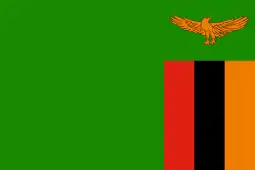 Zambia 241,112
Zambia 241,112 South Africa 238,532
South Africa 238,532.svg.png.webp) Bolivia 215,359
Bolivia 215,359 Tanzania 190,419
Tanzania 190,419 Venezuela 169,811
Venezuela 169,811 Uganda 95,098
Uganda 95,098 Chad 94,499
Chad 94,499 Pakistan 87,259
Pakistan 87,259 Myanmar 78,915
Myanmar 78,915 Colombia 70,504
Colombia 70,504 Malaysia 67,549
Malaysia 67,549 Thailand 65,096
Thailand 65,096 Papua New Guinea 59,898
Papua New Guinea 59,898
Jains
 India 5,146,697
India 5,146,697 United States 79,459
United States 79,459 Kenya 68,848
Kenya 68,848 United Kingdom 35,000
United Kingdom 35,000.svg.png.webp) Canada 12,101
Canada 12,101 Tanzania 9,002
Tanzania 9,002 Nepal 6,800
Nepal 6,800 Uganda 2,663
Uganda 2,663 Myanmar 2,398
Myanmar 2,398 Malaysia 2,052
Malaysia 2,052 South Africa 1,918
South Africa 1,918 Fiji 1,573
Fiji 1,573 Japan 1,535
Japan 1,535.svg.png.webp) Belgium 1,500
Belgium 1,500.svg.png.webp) Australia 1,449
Australia 1,449 Suriname 1,217
Suriname 1,217 Ireland 1,000
Ireland 1,000 Réunion 981
Réunion 981 Hong Kong 500 families[223]
Hong Kong 500 families[223] Yemen 229
Yemen 229
See also
Religions:
Notes
References
- ↑ "Religious Composition by Country, 2010-2050". Pew Research Center. 2 April 2015. Archived from the original on 28 January 2023. Retrieved 28 January 2023.
- 1 2 Wormald, Benjamin (2 April 2015). "The Future of World Religions: Population Growth Projections, 2010-2050". Pew Research Center's Religion & Public Life Project. Retrieved 20 March 2023.
- ↑ "Religious Composition by Country, 2010–2050". Pew Research Center's Religion & Public Life Project. Retrieved 20 March 2023.
- ↑ "Appendix A: Methodology". The Global Religious Landscape. Pew Research Center. 18 December 2012.
- 1 2 "World Religions Religion Statistics Geography Church Statistics". 12 February 2020. Archived from the original on 12 February 2020. Retrieved 1 January 2023.
- ↑ "Global Index of Religion and Atheism: Press Release" (PDF). Archived from the original (PDF) on 16 October 2012. Retrieved 1 July 2015.
- ↑ Lugira, Aloysius M. (2009). African Traditional Religions. New York: Chealsea House. p. 36. ISBN 9781604131031. Cited in Varghese, Roy Abraham (2011). Christ Connection: How the World Religions Prepared the Way for the Phenomenon of Jesus. Paraclete Press. p. 1935. ISBN 9781557258397. Archived from the original on 10 October 2020. Retrieved 24 March 2019.
- 1 2 3 4 5 6 7 8 9 10 11 12 13 14 15 16 17 18 19 20 21 22 23 24 25 26 27 28 29 30 31 32 33 34 35 36 37 38 39 40 41 42 43 44 45 46 47 48 49 50 51 "Jewish population - world 2017"" (PDF). www.jewishdatabank.org. Jewish data bank. Archived (PDF) from the original on 10 June 2019. Retrieved 25 April 2019.
- ↑ "Statistics | Bahá'í World News Service (BWNS)". Bahá’í World News Service. Archived from the original on 12 November 2020. Retrieved 6 November 2020.
- ↑ "Global Christianity – A Report on the Size and Distribution of the World's Christian Population" (PDF). Pew Research Center.
- ↑ "The World Factbook". Cia.gov. Archived from the original on 12 January 2021. Retrieved 14 February 2015.
- ↑ "Catholic Church". Gcatholic.org. Archived from the original on 28 July 2017. Retrieved 14 February 2015.
- ↑ "The World Factbook". Cia.gov. Archived from the original on 10 January 2021. Retrieved 14 February 2015.
- ↑ "The Association of Religion Data Archives – National Profiles". Thearda.com. Archived from the original on 29 September 2018. Retrieved 14 February 2015.
- ↑ "The World Factbook". Cia.gov. Archived from the original on 16 March 2017. Retrieved 14 February 2015.
- ↑ "The World Factbook". Cia.gov. Archived from the original on 31 May 2021. Retrieved 14 February 2015.
- ↑ "The World Factbook". Cia.gov. Archived from the original on 9 January 2021. Retrieved 14 February 2015.
- ↑ "Marshall Islands". U.S. Department of State. Archived from the original on 30 November 2009. Retrieved 14 February 2015.
- ↑ "2006 Tonga Census". Spc.int. Archived from the original on 23 July 2011. Retrieved 14 February 2015.
- ↑ "San Marino". International Religious Freedom Report 2006. US Department of State: Diplomacy in Action. Archived from the original on 5 September 2019. Retrieved 16 August 2012.
- ↑ "US Department of State – Paraguay – International Religious Freedom Report 2005". Archived from the original on 5 September 2019. Retrieved 3 June 2007.
- ↑ "The Association of Religion Data Archives – National Profiles". Thearda.com. Archived from the original on 28 August 2017. Retrieved 14 February 2015.
- ↑ "Kiribati". U.S. Department of State. Archived from the original on 30 November 2009. Retrieved 14 February 2015.
- ↑ "Micronesia, Federated States of". U.S. Department of State. Archived from the original on 30 November 2009. Retrieved 14 February 2015.
- ↑ "Barbados". U.S. Department of State. Archived from the original on 30 November 2009. Retrieved 14 February 2015.
- ↑ "Papua New Guinea, Religion and Social Profile – National Profiles – International Data". Thearda.com. Archived from the original on 24 July 2017. Retrieved 14 February 2015.
- ↑ "References :: Definitions and Notes — The World Factbook - Central Intelligence Agency". www.cia.gov. Archived from the original on 6 March 2008. Retrieved 25 January 2020.
- ↑ "2011 results - People and household census". www.recensamantromania.ro. Retrieved 17 December 2022.
- ↑ "Infographic – Religiousness of Polish inhabitiants". stat.gov.pl. Archived from the original on 9 March 2017. Retrieved 3 January 2022.
- ↑ "Population by Religion, by Towns/Municipalities, 2011 Census". Census of Population, Households and Dwellings 2011. Zagreb: Croatian Bureau of Statistics. December 2012. Retrieved 15 February 2014.
- 1 2 3 4 5 6 7 8 Miller, Tracy, ed. (October 2009). Mapping the Global Muslim Population: A Report on the Size and Distribution of the World's Muslim Population (PDF). Pew Research Center. Archived from the original (PDF) on 5 August 2010. Retrieved 30 May 2019.
- ↑ "Mauritania". 6 October 2021. Archived from the original on 7 January 2021. Retrieved 16 July 2021.
- ↑ "Maldives population (2021) live — Countrymeters". Archived from the original on 16 July 2021. Retrieved 16 July 2021.
- ↑ "Palestine Population 2021 (Demographics, Maps, Graphs)". Archived from the original on 27 July 2021. Retrieved 16 July 2021.
- 1 2 "Islam in Morocco - Islam Today and Other Religions | Travel Blog | About Us | Naturally Morocco". Archived from the original on 16 July 2021. Retrieved 16 July 2021.
- ↑ "Religions in Somalia | PEW-GRF". Archived from the original on 16 July 2021. Retrieved 16 July 2021.
- ↑ "The World Factbook". Cia.gov. Archived from the original on 16 September 2021. Retrieved 14 February 2015.
- ↑ "The World Factbook". Cia.gov. Archived from the original on 8 February 2021. Retrieved 14 February 2015.
- ↑ "How Strict is Islam in Turkey? Tips for Travelers". Archived from the original on 16 July 2021. Retrieved 16 July 2021.
- ↑ "The World Factbook". Cia.gov. Archived from the original on 10 January 2021. Retrieved 14 February 2015.
- ↑ "North Sudanese Culture - Religion". Archived from the original on 16 July 2021. Retrieved 16 July 2021.
- ↑ "The World Factbook". cia.gov. Archived from the original on 12 October 2021. Retrieved 14 February 2015.
- ↑ "The World Factbook". cia.gov. Archived from the original on 10 January 2021. Retrieved 14 February 2015.
- ↑ "Welcome to Bangladesh Bureau of Statistics". Bangladesh Bureau of Statistics. Archived from the original on 7 August 2011. Retrieved 10 January 2022.
- ↑ "Egypt Round 6 Data (2016) | Afrobarometer". Archived from the original on 22 October 2020. Retrieved 16 July 2021.
- ↑ "Statistik Umat Menurut Agama di Indonesia" (in Indonesian). Ministry of Religious Affairs. 15 May 2018. Archived from the original on 3 September 2020. Retrieved 24 September 2020.
- 1 2 3 4 5 6 7 8 9 10 11 12 13 14 15 16 17 18 19 20 21 22 23 24 25 26 Pew Research Center (10 November 2020). "Religious Composition by Country, 2010-2050". Archived from the original on 11 November 2020. Retrieved 11 November 2020.
- ↑ "Religious Composition by Country, 2010-2050". Pew Research Center's Religion & Public Life Project. 2 April 2015. Archived from the original on 15 February 2019. Retrieved 27 April 2020.
- ↑ CIS."Fusión de Barómetros de Septiembre a Diciembre de 2020" Archived 23 April 2021 at the Wayback Machine, 13,498 respondents. The question was "¿Cómo se define Ud. en materia religiosa: católico/a practicante, católico/a no practicante, creyente de otra religión, agnóstico/a, indiferente o no creyente, o ateo/a?".
- ↑ "Measuring Religion in Pew Research Center's American Trends Panel". Measuring Religion in Pew Research Center’s American Trends Panel | Pew Research Center. Pew Research Center. 14 January 2021. Archived from the original on 8 February 2021. Retrieved 9 February 2021.
- ↑ "Religions in Canada — Census 2011". Statistics Canada. 8 May 2013. Archived from the original on 19 December 2015. Retrieved 31 May 2021.
- ↑ "The World Factbook". Cia.gov. Archived from the original on 4 February 2021. Retrieved 14 February 2015.
- ↑ "C-1 Population By Religious Community". Census of India. Archived from the original on 13 September 2015. Retrieved 14 February 2015.
- ↑ Dostert, Pierre Etienne (1997). Africa 1997. The World Today Series. Harpers Ferry, West Virginia: Stryker-Post Publications. p. 162.
- ↑ "Australia - Oceania :: Fiji — The World Factbook - Central Intelligence Agency". www.cia.gov. Archived from the original on 26 August 2021. Retrieved 19 April 2010.
- ↑ "Bhutan". U.S. Department of State. Archived from the original on 30 November 2009. Retrieved 14 February 2015.
- ↑ "The World Factbook". Cia.gov. Archived from the original on 7 January 2021. Retrieved 14 February 2015.
- ↑ "Suriname". U.S. Department of State. Archived from the original on 30 November 2009. Retrieved 14 February 2015.
- 1 2 "Trinidad and Tobago 2011 Population and Housing Census Demographic Report" (PDF). Ministry of Planning and Sustainable Development Central Statistical Office. Archived from the original (PDF) on 2 May 2013. Retrieved 8 June 2013.
- ↑ "United Arab Emirates International Religious Freedom Report". Bureau of Democracy, Human Rights, and Labor. Archived from the original on 23 November 2010. Retrieved 12 January 2011.
- ↑ "Census of Population and Housing 2011". Statistics.gov.lk. Archived from the original on 17 October 2017. Retrieved 14 February 2015.
- ↑ "Kuwait". U.S. Department of State. Archived from the original on 10 October 2020. Retrieved 14 February 2015.
- ↑ "Bangladesh : AT A GLANCE". Archived from the original on 6 July 2011. Retrieved 14 February 2015.
- ↑ "Chapter 4 : Countries of the Gulf Region" (PDF). Indiadiaspora.nic.in. Archived from the original (PDF) on 16 June 2015. Retrieved 8 November 2017.
- ↑
- ↑ "CIA – The World Factbook – Malaysia". Archived from the original on 13 May 2009.
- ↑ "The World Factbook". Cia.gov. Archived from the original on 28 January 2021. Retrieved 14 February 2015.
- ↑ "Story: Diverse religions, p. 2: Hindus". Te Ara: The Encyclopedia of New Zealand. Archived from the original on 26 December 2018. Retrieved 1 July 2015.
- ↑ "Pak court gives bail to man accused of kidnapping Hindu girl in Peshawar". The Times of India. PTI. 14 January 2022. Retrieved 1 January 2023.
- ↑ "Peringatan". Sensus Penduduk 2010. Badan Pusat Statistik. Archived from the original on 24 December 2018. Retrieved 14 February 2015.
- ↑ "CIA – The World Factbook – United Kingdom". www.cia.gov. Archived from the original on 9 January 2021. Retrieved 9 February 2020.
- ↑ "The Daily — 2011 National Household Survey: Immigration, place of birth, citizenship, ethnic origin, visible minorities, language and religion". 8 May 2013.
- ↑ "America's Changing Religious Landscape". Pew Research Center. 12 May 2015. Archived from the original on 10 April 2019. Retrieved 19 June 2015.
- ↑ "Buddhists". Pewforum.org. 18 December 2012. Archived from the original on 18 April 2018. Retrieved 8 November 2017.
- ↑ 宗教年鑑 令和元年版 [Religious Yearbook 2019] (PDF) (in Japanese). Agency for Cultural Affairs, Government of Japan. 2019. p. 35.
- ↑ "Population Estimates Monthly Report - December 1, 2018 (Final estimates)". Archived from the original on 24 May 2019.
- ↑ Population figures from the Agency for Cultural Affairs Religious Yearbook 2019, as of the end of 2018, are as follows:[75]
Shinto: 80,219,808
Buddhism: 91,336,539
Christianity: 1,921,484
Other: 7,851,545
Percentages calculated using the official total population figure of 126,435,000 as of the end of 2018.[76] - ↑ Occhiogrosso, Peter. The Joy of Sects: A Spirited Guide to the World's Religious Traditions. New York: Doubleday (1996); p. 192.
- ↑ "BBC – Religion: Taoism". BBC. Archived from the original on 17 July 2017. Retrieved 14 February 2015.
- ↑ "Taiwan". U.S. Department of State. Archived from the original on 30 November 2009. Retrieved 14 February 2015.
- ↑ "Asia Sentinel – Independent news and analysis about Asia's politics, economics, culture and more". Asia Sentinel. Archived from the original on 20 August 2013. Retrieved 14 February 2015.
- ↑ "China (includes Tibet, Hong Kong, Macau)". U.S. Department of State. Archived from the original on 2 November 2009. Retrieved 14 February 2015.
- ↑ "China (includes Tibet, Hong Kong, and Macau)". U.S. Department of State. Archived from the original on 5 September 2019. Retrieved 14 February 2015.
- ↑ "The World Factbook". Cia.gov. Archived from the original on 20 March 2021. Retrieved 14 February 2015.
- ↑ "The World Factbook". Cia.gov. Archived from the original on 15 October 2021. Retrieved 14 February 2015.
- ↑ "Presidential Election in South Korea Highlights Influence of Christian Community". Pew Research Center's Religion & Public Life Project. 12 December 2007. Archived from the original on 10 March 2013. Retrieved 14 February 2015.
- ↑ World Almanac and Book of Facts 2000. Mahwah, NJ: PRIMEDIA Reference Inc. (1999). [Source: 1999 Encyc. Britannica Book of the Year]; p. 695.
- ↑ "Chinese traditional religion, continued…". Adherents.com. Archived from the original on 6 May 2017. Retrieved 14 February 2015.
{{cite web}}: CS1 maint: unfit URL (link) - ↑ "2009 Report on International Religious Freedom". state.gov. Archived from the original on 29 October 2009. Retrieved 14 February 2015.
- ↑ "Religious Composition by Country" (PDF) (table). Pew Forum of Religion & Global Life. Archived (PDF) from the original on 23 March 2018. Retrieved 11 September 2021.
- ↑ "International Religious Freedom Report for 2015". Archived from the original on 11 September 2021. Retrieved 11 September 2021.
- ↑ Alton, David (2013). Building Bridges: Is There Hope for North Korea?. Lion Hudson. p. 79. ISBN 978-0745955988.
- ↑ İNSAMER (2017). "Togo Cumhuriyeti" (in Turkish). Archived from the original on 15 April 2021. Retrieved 11 September 2021.
- ↑ Bureau of Democracy, Human Rights, and Labor (26 October 2009). "Sudan". International Religious Freedom Report 2009. U.S. Department of State. Archived from the original on 30 November 2009. Retrieved 14 February 2015.
- ↑ "Religions in Benin | PEW-GRF". Archived from the original on 17 October 2021. Retrieved 11 September 2021.
- ↑ "South Africa". U.S. Department of State. Archived from the original on 30 November 2009. Retrieved 14 February 2015.
- ↑ "Sierra Leone". U.S. Department of State. Archived from the original on 30 November 2009. Retrieved 14 February 2015.
- ↑ "Palau". U.S. Department of State. Archived from the original on 30 November 2009. Retrieved 14 February 2015.
- ↑ Government of Canada, Statistics Canada (26 October 2022). "Religion by visible minority and generation status: Canada, provinces and territories, census metropolitan areas and census agglomerations with parts". www12.statcan.gc.ca. Retrieved 26 October 2022.
- ↑ Government of Canada, Statistics Canada (26 October 2022). "The Daily — The Canadian census: A rich portrait of the country's religious and ethnocultural diversity". www150.statcan.gc.ca. Retrieved 26 October 2022.
- ↑ Barwiński, Marek; Musiaka, Łukasz (2019). "The Sikhs – religion and nation. Chosen political and social determinants of functioning". Studia Z Geografii Politycznej I Historycznej. 8: 167–182. doi:10.18778/2300-0562.08.09. hdl:11089/38783. S2CID 226730777 – via ResearchGate.
- ↑ "Sikh-population-as-per-census".
- ↑ Puri, Harish K. (June–July 2003). "Scheduled Castes in Sikh Community: A Historical Perspective". Economic and Political Weekly. Economic and Political Weekly. 38 (26): 2693–2701. JSTOR 4413731.
- ↑ "Total fertility rate down across all communities | India News - Times of India". The Times of India. 8 May 2022.
- ↑ The Indian Sikh population grew from 16,420,685 to 19,237,391 between 1991 and 2001, a rise of 2,816,706 or 17.15%. It further rose from 19,237,391 to 20,833,116 between 1991 and 2001, a rise of 1,595,725 or 8.29%.[101][102][103] Assuming the Indian Sikh population growth rate continues to decline at the same rate, which is likely since Sikhs have the lowest birth rate across all Indian religious groups, the Indian Sikh population would grow by 4.01% between 2011 and 2021, or from 20,833,116 to 21,668,524.[104]
- ↑ "Religious Freedom in the World. Report 2021" (PDF). acninternational.org. Archived from the original (PDF) on 22 February 2023. Retrieved 21 March 2023.
- ↑ "Religion, England and Wales - Office for National Statistics". www.ons.gov.uk. Retrieved 1 January 2023.
- ↑ "Losing our religion | Stats NZ".
- ↑ Glenn (6 September 2012). "2011 Australian Census - Fastest Growing Religions". Blog.id.com.au. Retrieved 2 September 2022.
- ↑ "2071.0 - Census of Population and Housing: Reflecting Australia - Stories from the Census, 2016". Australian Bureau of Statistics. 28 June 2017. Retrieved 14 August 2021.
- ↑ ARDA claim: "National Profiles". www.thearda.com.
- ↑ Gokulan, Dhanusha. "Sikhs in UAE hail country's year of 'respect, inclusion'". Khaleej Times. Retrieved 1 January 2023.
- ↑ "Over 40,000 Sikhs vote in secessionist Referendum in Italy". Geo News.
it had chosen the city of Brixia because Italy had over 200,000 Sikhs living in the county with a majority in Brescia.
- ↑ "Around 45,000 Sikhs vote in Referendum in Italy". Daily Pakistan.
That it had chosen the city of Brixia because Italy had over 200,000 Sikhs living in it with a majority in Brescia
- ↑ "Sikhs vote in referendum in Rome". Pakistan Today. 3 July 2022.
About 200,000 Sikhs live in different cities of Italy.
- ↑ "Sikhs vote in referendum in Rome". The Nation.
About 200,000 Sikhs live in different cities of Italy.
- ↑ "Thousands of Sikhs attend parade in Italy". Bol News.
Italy has over 200,000 Sikhs who are active members of the Italian population, which is why this city was chosen
- ↑ "The Continuing Struggle for Religious Freedom by Italy's Sikh Community". The Wire.
It is estimated that there are around 220,000 Sikh migrants in Italy. The community, however, has been largely invisible to native Italians. The majority of Sikhs are dairy workers, living far from the cities, and settled mainly in the farms of north and central Italy.
- 1 2 "How the recent Punjabi migration to Spain & Italy is a departure for the diaspora". The Economic Times. 29 July 2018.
The total number of Indians in Italy has now crossed 200,000, making it the largest Indian diaspora in continental Europe and far greater than the 30,000 estimated in Spain. This Indian contingent is mainly made up of Punjabi Jat Sikhs.
- 1 2 "How Sikhs saved the Italian cheese industry". Global Indian.
Today, Italy has the largest Sikh population in Europe, only second to the United Kingdom, with an estimated number of 220,000
- ↑ Bertolani, Barbara (2013). "The Sikhs in Italy: A Growing Heterogeneous and Plural Presence". Globalizing Belief, Localizing Gods. Brill Publishers. p. 75. ISBN 9789004254756.
According to Gallo (2013), by contrast, the Sikhs would number at least 100,000. Barbara Bertolani estimates in 2013 "My own data gathered within the Sikh community in Italy show Sikh people constituting about 70% of all the Indians present, i.e., at least 84,000 residents
- 1 2 "Why the Indian government must help Italian Sikhs". Hindustan Times.
Up to 150,000 Sikhs now live there, making it the largest Sikh Community in Europe after the one in Britain
- ↑ "The Sikhs Spearheading The Italian Parmesan Cheese Industry". Homegrown.
Despite the estimated 220,000 Sikh immigrants who inhabit the Po Valley, there seems to a whiff of change in the air
- 1 2 "Sikhs vote in referendum in Rome". Pakistan Today.
About 200,000 Sikhs live in different cities of Italy.
- 1 2 Tebano, Elena. "Prayer at dawn, zero crime: this is how Sikhs live in Italy, after the sentence of the Cassation". Corriere Della Sera.
The vegan diet, the cult, the traditions. Customs and symbols of the 150,000 faithful of the religion born in India who now live in the Bel Paese
- ↑ [113][114][115][116][117][118][119][120][121][122][123][124][125]
- ↑ Kaur, Arunajeet (2008), "The Evolution of the Sikh Identity in Singapore", Religious Diversity in Singapore, ISEAS–Yusof Ishak Institute, pp. 275–297, ISBN 978-981-230-755-2, retrieved 3 January 2023
- ↑ "Sikhs". Adherents.com. Archived from the original on 28 February 2014. Retrieved 8 November 2017.
{{cite web}}: CS1 maint: unfit URL (link) - ↑ "Sikhs fastest-growing minority in NZ: Census". Tribuneindia News Service. Retrieved 1 January 2023.
- ↑ "Inside Australia's fastest growing major religion". SBS News. Retrieved 1 January 2023.
- ↑ "Most Spiritist Nations (2005) - QuickLists - The Association of Religion Data Archives". Thearda.com. Archived from the original on 5 May 2011. Retrieved 8 November 2017.
- ↑ ""Nones" on the Rise". Pew Research Center's Religion & Public Life Project. 9 October 2012. Archived from the original on 25 December 2018. Retrieved 14 February 2015.
- ↑
- ↑ "Число российских атеистов снизилось на 5 процентов за три года". 15 January 2013. Archived from the original on 18 June 2018. Retrieved 14 April 2017.
- ↑ "Religious diversity is increasing in Mexico". Geo-mexico.com. 28 May 2011. Archived from the original on 20 August 2017. Retrieved 14 February 2015.
- 1 2 3 4 "Table: Christian Population in Numbers by Country". Pew Research Center's Religion & Public Life Project. 19 December 2011. Archived from the original on 22 May 2013. Retrieved 14 February 2015.
- ↑ "PHILIPPINES 2012 INTERNATIONAL RELIGIOUS FREEDOM REPORT" (PDF). State.gov. Archived (PDF) from the original on 28 March 2017. Retrieved 8 November 2017.
- ↑ "Religionen & Weltanschauungsgemeinschaften in Deutschland: Mitgliederzahlen". Remid.de. Archived from the original on 25 December 2018. Retrieved 14 February 2015.
- ↑ "Statistik Umat Menurut Agama di Indonesia" (in Indonesian). Kementerian Agama Republik Indonesia. 15 May 2018. Archived from the original on 3 September 2020. Retrieved 15 November 2020.
Muslim 231.069.932 (86.7), Christian 20.246.267 (7.6), Catholic 8.325.339 (3.12), Hindu 4.646.357 (1.74), Buddhist 2.062.150 (0.77), Confucianism 71.999 (0.03), Others/Traditional faiths 112.792 (0.04), Total 266.534.836
- 1 2 "Muslim Population by Country 2021". Archived from the original on 6 December 2020. Retrieved 16 July 2021.
- ↑ "POPULATION BY RELIGION". Pakistan Bureau of Statistics. Archived from the original on 16 July 2021. Retrieved 10 January 2022.
- ↑ "Muslim Population in India - Total Muslims in India". Archived from the original on 29 June 2021. Retrieved 16 July 2021.
- ↑ "Bangladesh Population 2021 (Demographics, Maps, Graphs)". Archived from the original on 18 July 2021. Retrieved 16 July 2021.
- ↑ "Nigeria". 12 October 2021. Archived from the original on 9 January 2021. Retrieved 16 July 2021.
- ↑ "Egypt Population 2021 (Demographics, Maps, Graphs)". Archived from the original on 18 July 2021. Retrieved 16 July 2021.
- ↑ "WVS Database". Archived from the original on 3 July 2021. Retrieved 16 July 2021.
- ↑ "Religious Composition by Country, 2010-2050". 2 April 2015. Archived from the original on 15 February 2019. Retrieved 14 April 2020.
- ↑ "Sudan Population 2021 (Demographics, Maps, Graphs)". Archived from the original on 18 July 2021. Retrieved 16 July 2021.
- ↑ "Iraq". 12 October 2021. Archived from the original on 10 January 2021. Retrieved 16 July 2021.
- ↑ "Archived copy". Archived from the original on 12 December 2020. Retrieved 16 July 2021.
{{cite web}}: CS1 maint: archived copy as title (link) - ↑ "Afghan Culture — Cultural Atlas". Culturalatlas.sbs.com.au. Archived from the original on 16 August 2021. Retrieved 10 January 2022.
- ↑ "Saudi Arabia Population 2021 (Demographics, Maps, Graphs)". Archived from the original on 17 July 2021. Retrieved 16 July 2021.
- ↑ "Muslims seek voice in changing Uzbekistan". 27 May 2019. Archived from the original on 16 July 2021. Retrieved 16 July 2021.
- ↑ "Yemen | History, Map, Flag, Population, Capital, & Facts". Archived from the original on 10 May 2020. Retrieved 16 July 2021.
- ↑ "China Population 2021 (Demographics, Maps, Graphs)". Archived from the original on 18 July 2021. Retrieved 16 July 2021.
- ↑ "Islam in Russia". www.aljazeera.com. Archived from the original on 24 June 2019. Retrieved 17 August 2018.
- ↑ "Tanzania Population 2021 (Demographics, Maps, Graphs)". Archived from the original on 26 July 2021. Retrieved 16 July 2021.
- ↑ "Niger Population 2021 (Demographics, Maps, Graphs)". Archived from the original on 13 July 2021. Retrieved 16 July 2021.
- ↑ "The Future of World Religions: Population Growth Projections, 2010–2050". Pew Research Center. 1 January 2020. Archived from the original on 22 February 2017. Retrieved 22 February 2017.
- ↑ "The 8 Major National Ethnic Races in Myanmar". www.myanmar.gov.mm. 20 December 2007. Archived from the original on 20 December 2007. Retrieved 8 November 2017.
- ↑ "South America :: Guyana — The World Factbook - Central Intelligence Agency". www.cia.gov. Archived from the original on 7 January 2021. Retrieved 19 April 2010.
- ↑ Pew-Templeton. "Religious Demography: Affiliation - Yemen 2020 statistics". Pew Templeton. Archived from the original on 19 January 2019. Retrieved 18 July 2021.
- ↑ "South America :: Suriname — The World Factbook - Central Intelligence Agency". www.cia.gov. Archived from the original on 22 April 2021. Retrieved 18 August 2019.
- ↑ Haynes, Jeffrey (13 January 2016). Routledge Handbook of Religion and Politics. Routledge. ISBN 978-1-317-28747-6. Archived from the original on 10 October 2020. Retrieved 13 September 2020.
- 1 2 "India People and Society". The World Factbook. Retrieved 15 February 2023.
- ↑ "Sikh Population in World | Sikh Population in India 2023". 22 December 2021.
- ↑ "Sikh Religion Census 2011". Retrieved 21 March 2023.
- ↑ Government of Canada, Statistics Canada (26 October 2022). "Religion by visible minority and generation status: Canada, provinces and territories, census metropolitan areas and census agglomerations with parts". www12.statcan.gc.ca. Retrieved 26 October 2022.
- ↑ Government of Canada, Statistics Canada (26 October 2022). "The Daily — The Canadian census: A rich portrait of the country's religious and ethnocultural diversity". www150.statcan.gc.ca. Retrieved 26 October 2022.
- ↑ "Religion, England and Wales - Office for National Statistics". www.ons.gov.uk. Retrieved 3 January 2023.
- ↑ "Does the Census Bureau have data for religion?". United States Census Bureau. Retrieved 18 March 2023.
- ↑ "Asian Indian Was The Largest Asian Alone Population Group in 2020". United States Census Bureau. Retrieved 23 September 2023.
- ↑ "Census Profile, 2021 Census of Population". Statistics Canada. Retrieved 23 September 2023.
- ↑ "Statistical Abstract of the United States: 2012 - Section 1: Population - Table 75: Self-Described Religious Identification of Adult Population: 1990, 2001, and 2008 (page 61)" (PDF). United States Census Bureau. Retrieved 14 April 2023.
- ↑ "Statistical Abstract of the United States: 2012 - Section 1: Population - Table 75: Self-Described Religious Identification of Adult Population: 1990, 2001, and 2008 (page 61)" (PDF). United States Census Bureau. Retrieved 14 April 2023.
- ↑ "How Many U.S. Sikhs?". Pew Research Center. Retrieved 18 March 2023.
- ↑ "About Sikhs". Sikh Coalition. Retrieved 14 April 2023.
- ↑ "H. RES. 275 - 118th Congress (2023-2024)". United States Congress. Retrieved 14 April 2023.
- ↑ "How Many U.S. Sikhs?". Pew Research Center. Retrieved 18 March 2023.
- ↑ "Sikhism Reporter's Guide". Sikh Coalition. Retrieved 23 July 2023.
- ↑ "The Sikh Community Today". Harvard University. Retrieved 28 March 2023.
Today there are well over 500,000 Sikhs in the United States.
- ↑ "American Sikhs are targets of bigotry, often due to cultural ignorance". Religion News Service. Retrieved 28 March 2023.
Scholars and government officials estimate the Sikh American population to number around 500,000.
- ↑ "Sikhs in America:A History of Hate". ProPublica. Retrieved 28 March 2023.
There are an estimated 500,000 Sikhs living in the U.S., many in New York and California.
- ↑ "April 2022: Sikh Awareness and Appreciation Month". State of Michigan Office of the Governor. Retrieved 28 March 2023.
Sikhism is the fifth largest religion in the world, and, today, there are more than 30 million Sikhs worldwide and an estimated 500,000 Sikh Americans;
- ↑ "Want to know about Sikhism?". WUWM. Retrieved 28 March 2023.
There are more than 500,000 Sikhs in the United States.
- ↑ "A Brief Introduction to Sikhism". WTTW. Retrieved 28 March 2023.
Despite its relatively recent arrival in Chicago, Sikhism is the world's fifth-largest religion, with 25 to 30 million adherents around the globe and an estimated 500,000 in America today.
- ↑ [181][182][183][184][185][186]
- ↑ "Asian Americans: A Mosaic of Faiths". Pew Research Center. Retrieved 14 April 2023.
- ↑ "2020 National Sikh American Survey: Key Findings". Sikh American Legal Defense and Education Fund. Retrieved 14 April 2023.
- ↑ "DP05ACS DEMOGRAPHIC AND HOUSING ESTIMATES". United States Census Bureau. Retrieved 14 April 2023.
- ↑ While the U.S. Census does not ask about religion,[171] 70,697 Americans (or 0.02% of the total population) declared Sikh as their ethnicity in the 2020 census.[172] In the 2021 Canadian census, 194,640 Canadians declared Sikh as their ethnicity while 771,790 Canadians declared Sikh as their religion, indicating that the Sikh American population may be around 280,329, or 0.08% of the total population.[173] The U.S. Census Bureau estimated the adult Sikh American population at 78,000 in 2008.[174] The Pew Research Center estimated the Sikh American adult population to be 140,000 and the total population at 200,000 in 2012 while the World Religion Database at Boston University estimated the American Sikh population to be at 280,000 in 2012.[175][176] Sikh organizations like the Sikh Coalition and American Sikh Congressional Caucus estimate the Sikh American population to be as high as 1,000,000, but do not provide any sources for these figures;[177][178][179] 500,000 nevertheless remains the most cited Sikh American population size in news media.[180][187] With 1% of Asian Americans being Sikh, and 90.7% of Sikh Americans being Asian American, the American Sikh population can be estimated around 280,000-500,000 in 2021.[188][189][190]
- ↑ Glenn (6 September 2012). "2011 Australian Census - Fastest Growing Religions". Blog.id.com.au. Retrieved 2 September 2022.
- ↑ "2071.0 - Census of Population and Housing: Reflecting Australia - Stories from the Census, 2016". Australian Bureau of Statistics. 28 June 2017. Retrieved 14 August 2021.
- ↑ "Over 40,000 Sikhs vote in secessionist Referendum in Italy". Geo News.
it had chosen the city of Brixia because Italy had over 200,000 Sikhs living in the county with a majority in Brescia.
- ↑ "Around 45,000 Sikhs vote in Referendum in Italy". Daily Pakistan.
That it had chosen the city of Brixia because Italy had over 200,000 Sikhs living in it with a majority in Brescia
- ↑ "Sikhs vote in referendum in Rome". Pakistan Today. 3 July 2022.
About 200,000 Sikhs live in different cities of Italy.
- ↑ "Sikhs vote in referendum in Rome". The Nation.
About 200,000 Sikhs live in different cities of Italy.
- ↑ "Thousands of Sikhs attend parade in Italy". Bol News.
Italy has over 200,000 Sikhs who are active members of the Italian population, which is why this city was chosen
- ↑ "The Continuing Struggle for Religious Freedom by Italy's Sikh Community". The Wire.
It is estimated that there are around 220,000 Sikh migrants in Italy. The community, however, has been largely invisible to native Italians. The majority of Sikhs are dairy workers, living far from the cities, and settled mainly in the farms of north and central Italy.
- ↑ Bertolani, Barbara (2013). "The Sikhs in Italy: A Growing Heterogeneous and Plural Presence". Globalizing Belief, Localizing Gods. Brill Publishers. p. 75. ISBN 9789004254756.
According to Gallo (2013), by contrast, the Sikhs would number at least 100,000. Barbara Bertolani estimates in 2013 "My own data gathered within the Sikh community in Italy show Sikh people constituting about 70% of all the Indians present, i.e., at least 84,000 residents
- ↑ "The Sikhs Spearheading The Italian Parmesan Cheese Industry". Homegrown.
Despite the estimated 220,000 Sikh immigrants who inhabit the Po Valley, there seems to a whiff of change in the air
- ↑ [194][195][196][197][198][199][119][120][200][122][201][124][125]
- ↑ "Gobind Singh Deo is Malaysia's first Sikh minister". The Economic Times.
Malaysia has nearly 100,000 Sikh population.
- ↑ "Malaysia gets first Sikh minister". WION.
Miri Indian Association president, Councillor Karambir Singh was quoted as saying by the Borneo Post. Malaysia has nearly 100,000 Sikh population
- ↑ "On the Gurdwara Trail in Malaysia: A Spiritual Experience". SikhNet.
The Malaysian Sikh community is the fourth largest ethnic group of Malaysian Indians. It is estimated that over 100,000 Sikhs reside in Malaysia. The Sikh population is the largest here among Southeast and East Asia.
- ↑ "Thailand". U.S. Department of State.
- ↑ Gokulan, Dhanusha. "Sikhs in UAE hail country's year of 'respect, inclusion'". Khaleej Times. Retrieved 3 January 2023.
- ↑ "Punjabi community involved in money lending in Philippines braces for 'crackdown' by new President". The Indian Express. 18 May 2016. Retrieved 3 January 2023.
- ↑ "Khalsa Diwan Sikh Temple - Gurdwara Philippines". 1 December 2011. Archived from the original on 1 December 2011. Retrieved 3 January 2023.
- ↑ "Losing our religion | Stats NZ". www.stats.govt.nz. Retrieved 3 January 2023.
- ↑ ARDA claim: "National Profiles". www.thearda.com.
- ↑ "Portugal Fact Sheet". Embassy of India (Lisbon, Portugal).
Sikhs (35,000), In recent years, the number of Indians (especially from Punjab/Haryana) has increased significantly owing to the easing of immigration norms by Portugal. However, since many of them do not have valid residency documents, official figures are not available.
- ↑ "France's Sikh Minority Looks Set to Vote Against Marine Le Pen". The Wire. 6 May 2017.
- ↑ Garha, Nachatter Singh (6 February 2020). "Masculinity in the Sikh Community in Italy and Spain: Expectations and Challenges". Religions. 11 (2): 76. doi:10.3390/rel11020076.
- ↑ "Mitgliederzahlen: Sonstige - REMID - Religionswissenschaftlicher Medien- und Informationsdienst e.V." remid.de (in German). Retrieved 16 August 2017.
Sikhs, 25,000 (2020)....The "German Information Center for Sikh Religion, Sikh History, Culture and Science (DISR)" estimates the number of Sikhs in Germany at 18,000 for 2017
- ↑ Lavin, Talia (26 April 2015). "Vibrant Vaisakhi Celebrates Sikh Life In Greece". Huffington Post.
The Sikh community in Greece, numbered at around 20,000 according to a 2012 report, joined together to mark the holy day
- ↑ "Kuwait To Seek Closure of "Illegal" Sikh Temple". Outlook India. 3 February 2022. Retrieved 21 March 2023.
- ↑ Pinto, Christina (14 August 2019). "Sikh Gurdwara discovered by 'intrepid' local reporter". TimesKuwait. Retrieved 3 January 2023.
- ↑ "Hong Kong stories: Getting to know the city's Sikh community". Young Post. Retrieved 3 January 2023.
- ↑ Lawrence, Mary (22 May 2022). "Het licht van God zien in de ander, daar gaat het om bij de sikhs" [Seeing the light of God in the other, that's what the Sikhs are all about]. Trouw. Archived from the original on 24 May 2022. Retrieved 2 June 2023.
In Nederland wonen zo'n 15.000 sikhs, die hier sinds de jaren zestig vanuit Afghanistan, Pakistan en India kwamen, op zoek naar werk of op de vlucht voor de Sovjets, de Taliban of de geradicaliseerde aanhangers van Indira Gandhi, nadat zij in 1984 door haar sikhlijfwacht was vermoord. Ons land telt inmiddels negen gurdwara's. [Some 15,000 Sikhs live in the Netherlands, who have come here from Afghanistan, Pakistan and India since the 1960s, looking for work or fleeing the Soviets, the Taliban or the radicalized followers of Indira Gandhi, after they were killed in 1984. her Sikh bodyguard had been killed. Our country now has nine gurdwaras.]
- ↑ ARDA claim: "Most Baháʼí Nations (2010)". QuickLists > Compare Nations > Religions. The Association of Religion Data Archives. 2010. Archived from the original on 22 March 2019. Retrieved 20 August 2013.
- ↑ "Most Jainist Nations (2005)". Association of Religion Data Archives. 2005. Archived from the original on 14 April 2010. Retrieved 23 July 2010.
- ↑ "Jain festival Paryushana uses prayer, fasting and meditation to ask for forgiveness". Young Post. Archived from the original on 18 May 2021. Retrieved 4 June 2021.
External links
- Asian-Nation: Religious Affiliation among Asian Americans
- International Religious Freedom Report 2007 of U.S. Department of State
- Background Notes of U.S. Department of State
- The World Factbook of CIA
- Religious Freedom page
- Religious Intelligence
- BBC News – Muslims in Europe: Country guide
- Vipassana Foundation – Buddhists around the world


